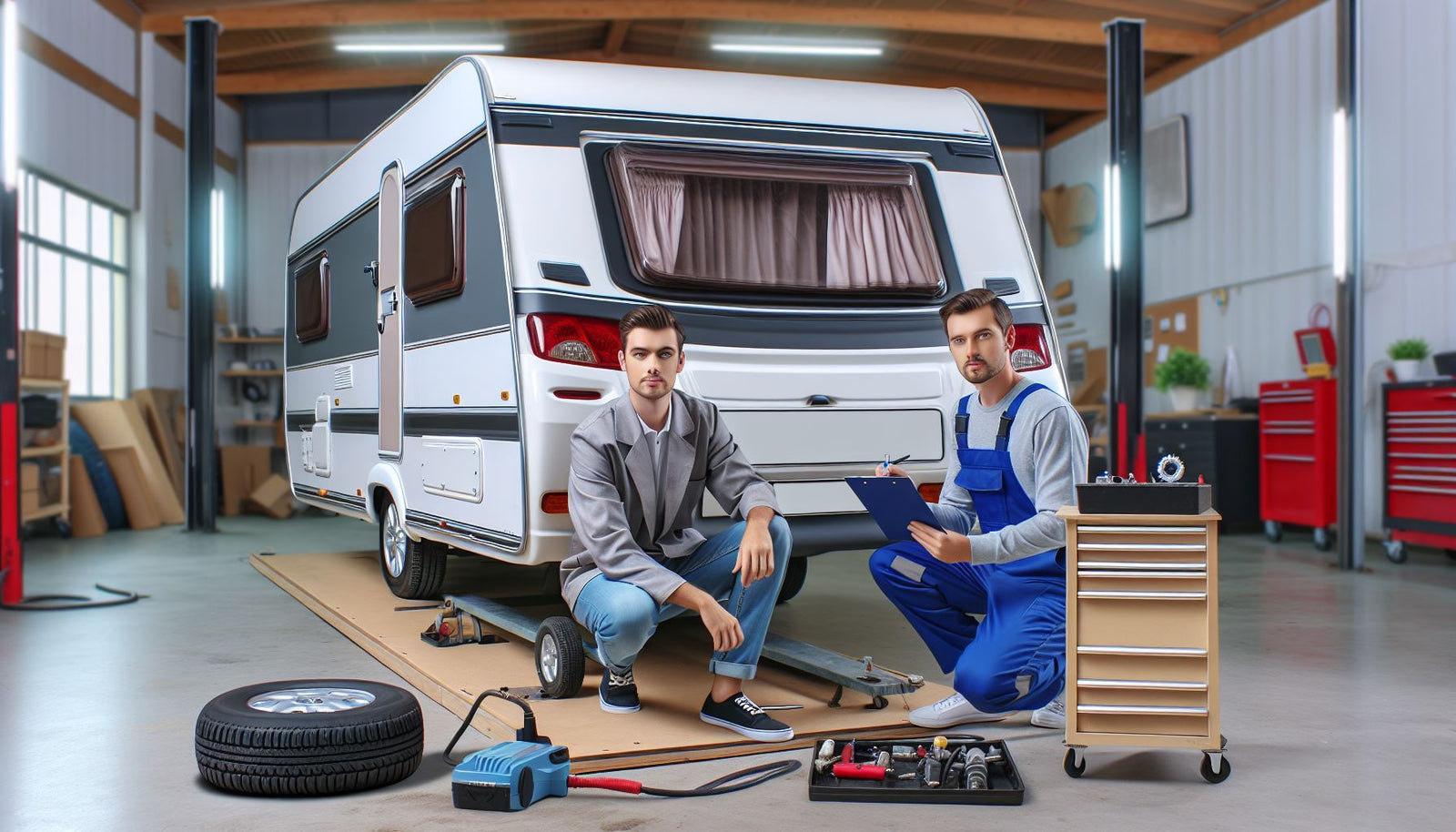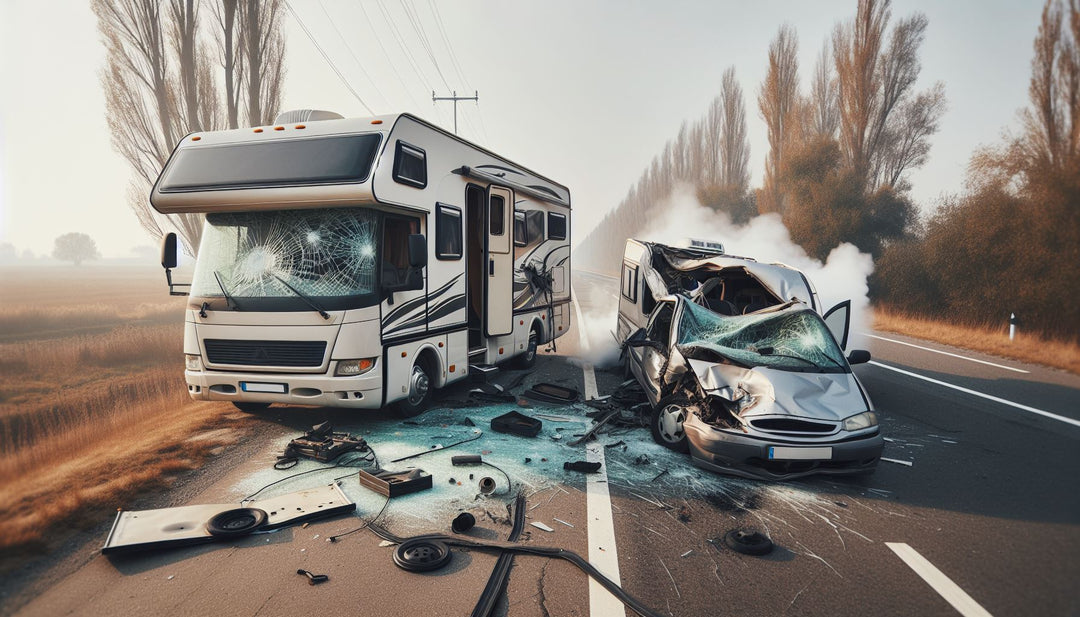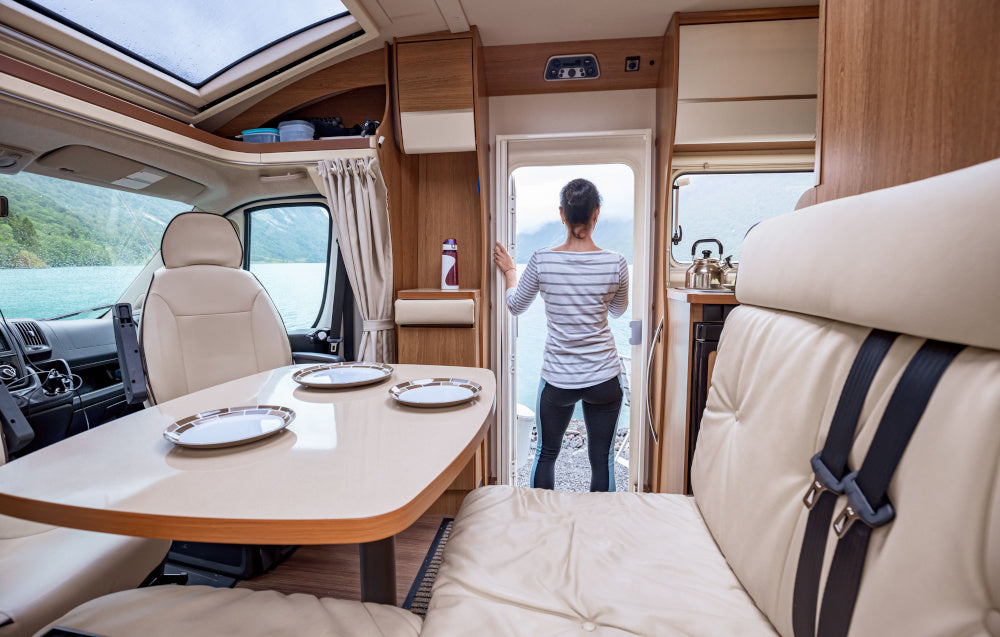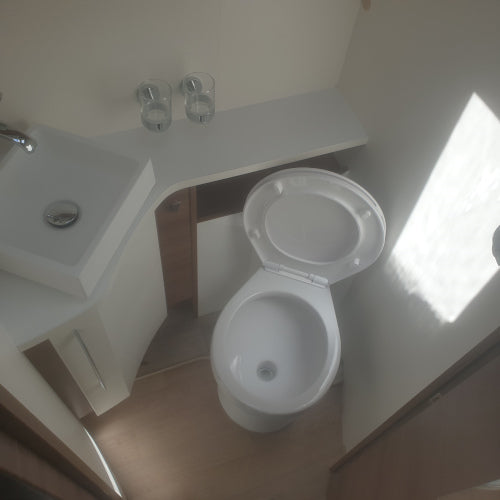Caravan Self Containment explained

Self-containment for European Caravans explained.
We have so many people asking how to do the self-containment plumbing work on a caravan; our staff is all trained to do this work. Like most jobs, it is fairly easy once you know what to do.
If you have no idea about plumbing, are too busy, or are not very handy, then get some help or book it with us, and we will sort it out for you.
There are five questions you should ask yourself before you decide to do it yourself; I have listed the questions below.
- What components will I need?
- How can I ensure that the water will drain appropriately at all times?
- Who will inspect my workmanship and sign it off for me?
- What are the regulations, and where do I find them?
In this blog, we will explain what to do by answering each question in turn
What components will I need?
The number one rule for efficiency is to buy a kit that contains everything you might need to complete the job; in the end, you might have one or two bits left over, but that is a lot more efficient than driving around town trying to match different components from various suppliers to make up something that is not going to leak and will eventually pass.
We have been doing this since the regulations were first introduced, about a decade ago. If I had a dollar for every customer who started off thinking it was going to be easy and then wishing they had not started, I would be doing very well. Sometimes, they will visit our warehouse 5 or 6 times because they need some extra components that they have forgotten, or they tell us they were not aware they needed to do something to complete the job. After going to and fro between us and the certifier trying to get it signed off, they will often have spent a couple of days; I have written this blog to make the process easier and simpler for you, us, and the certifier.
We supply kits that contain all you need; see the links in the paragraph below:
Let's start with the caravan plumbing first. Unfortunately, none of the waste plumbing fitted to European caravans conforms to NZ regulations. European Caravans mostly have two wastewater outlets with flaps that come out one of the sides just under the skirt; the plumbing consists of 28mm grey or black pipe, with simple, reusable push-fit couplings. The main reason the caravans fail is because the sinks and shower tray have no waste traps, and the waste outlet should have a single shut-off valve that can connect to a portable waste tank outside.
So, the first thing to do is to buy a kit containing all the components required to alter the existing plumbing of your caravan. You will be able to reuse some of the existing fittings on your caravan The kit we supply is a collection of parts that should supplement your existing plumbing in order to meet NZ regulations. See the image below and the link to buy the Caravan self-containment kit

We will go into more detail about how the work is done later under the third heading. (How can I ensure that the water will always drain appropriately?)
Once you have the parts to convert your Caravan plumbing, you will need a tank that connects straight to the caravan that you are converting,
Purchase the caravan Self containment tank

If you already have a tank that looks similar to the one above, you have two options.
- You can convert your existing tank using the following kit: Purchase the tank conversion kit.
- Or you can adapt your existing tank to connect to our tank and double your waste-water capacity. This increases the self-containment capacity of your caravan and makes it suitable for a larger number of occupants.
How can I ensure that the water will drain properly at all times?
The wastewater outlet on the caravan must come out the side of the caravan and should have enough head to flow into the portable waste water tank; that is why the wastewater tanks are made low and flat; our kits include a 25mm ball valve with Camlock fittings which you mount as close as possible to the wheels. This is important because if the valve is mounted on the extremities of the caravan, the water needs to travel further. It is more likely that the valve will be damaged when the caravan swings past obstacles while in transit. Also, you do not want the waste water coming out on the awning side of the caravan, or else you will be tripping over the tank all the time.
Once you have located the point of discharge you can start to alter your plumbing under the caravan, Start with the shower tray and fit the standard trap without the waste inlet to the shower tray. Run the shower pipe as tight as possible to the underside of the floor toward the ball valve. Then run your vanity and kitchen sink plumbing separately towards the same ball valve; these two pipelines must be mounted on blocks at about 50-60mm lower than the shower outlet pipe to prevent backfeed and prevent the water from the higher level sink and vanity ending up in the lower level shower tray.
The 28mm Y connections in the kit are very useful here to direct the water flow away from the shower tray and out to the discharge point and valve. Keep the Y junction distances as far from the shower tray as possible.
Who will inspect my workmanship and sign it off for me?
All self-containment requires a sign-off. Below are a number of organizations that can put you in contact with a self-containment officer, who will process your paperwork and deal with the admin.
- The NZMCA is the original organization behind the implementation of self-containment and its policies. Their members mostly own large motorhomes and caravans, but they do not particularly cater to smaller vehicles without a separate toilet and shower compartment. Becoming a member of the NZMCA will give you access to their resources, and they arrange member discounts for ferries campsites and insurance
- All Points Camping caters to people with smaller vehicles without dedicated shower and toilet facilities. They work hard to find sensible ways to meet self-containment regulations with not-considered high-end, big-value vehicles.
- Vantage RV has self-containment certifiers; we can inspect vehicles and process the paperwork through the NZMCA or All Points Camping. We charge an inspection fee, and if any additional work needs to be done to obtain the certificate, we will charge an hourly rate to get it signed off.
What are the self-containment regulations, and where do I find them?
The regulations are well documented, and in this paragraph, you will find links to solutions and to other sites that outline the rules exactly. Here is a summary of the most critical aspects of the regulations.
- Traps must be within 1 meter of the waste source
- If the waste pipeline is more than 3 meters long, it must have a breather
- Usually, there are no problems with the cassette toilets in modern European caravans, so don't stress about the toilet
- The freshwater tanks should have enough capacity to provide 4 L per person for three days; for example, 24 liters is required for two people for three days. The minimum size of the freshwater tank should be no less than 20 liters. We have 40-liter portable freshwater tanks available
- The waste water tank should be the same size or slightly bigger than the fresh water tank; if the waste tank is smaller or equal to the fresh water tank, then you will need a tank level indicator on your waste tank showing when it is getting full. See waste tanks
- What are the regulations See link
This blog provides guidance. It is not designed to provide definitive instructions for specific vehicles or to interpret the rules and regulations. If you are unsure, you should seek professional help.


